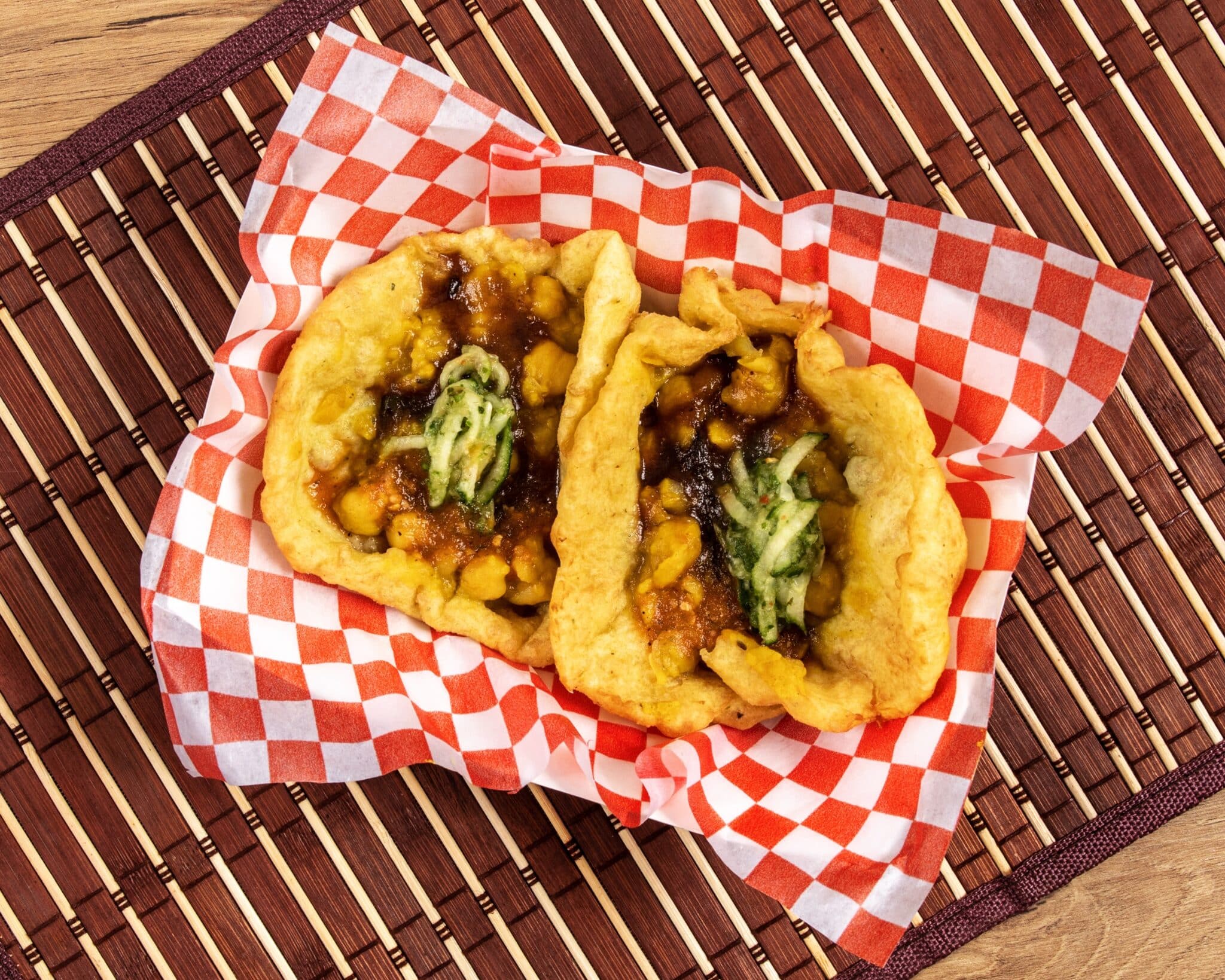
Doubles, a beloved street food in Trinidad & Tobago, is more than just a meal. It’s an experience. This humble dish traces its roots back to Indian cuisine and has evolved into something uniquely Caribbean, thanks to Trinidad’s spices and ingredients.
If you’re a fan of international cuisine, you’re in the perfect spot. Our Remitly team has crafted this guide as part of our series dedicated to the traditional foods of our global customers.
The Origin of Doubles
The tale of doubles unfolds with the arrival of Indian indentured laborers in Trinidad & Tobago during the 19th century. These newcomers brought along their culinary customs, which featured channa (curried chickpeas) and bara (fried dough). Over time, these elements melded with local ingredients, culminating in the creation we now recognize as doubles.
In the early 20th century, an Indo-Trinidadian couple, grappling with adversity, embarked on culinary experimentation by merging Indian traditional fare with local ingredients.
They began vending these creations from a cart around town, with their most beloved innovation being small baras sandwiched with channa in between, hence the name “doubles.”
Ingredients and Process
At its core, doubles is simple: bara and channa. Bara is made from flour, turmeric, cumin (geera), yeast, salt, and water. Channa involves chickpeas simmered in a curry sauce with garlic, onion, cumin and other spices.
However, it’s not just about these two components. Toppings play an essential role too. Cucumber chutney adds freshness, while tamarind sauce lends sweetness. Pepper sauce brings heat for those who like it spicy.
Once both components are ready comes the assembly. A piece of bara is placed in the palm, topped with a generous spoonful of channa and any desired toppings before being covered with another piece of bara. The result? A delicious, messy delight.
While the basic recipe remains consistent, variations exist across Trinidad & Tobago. Some vendors offer additional toppings like grated carrot or coconut chutney. Others might adjust their spice blend to create a unique flavor profile.
Recipe for Doubles
Fancy trying doubles? Well, you don’t have to fly all the way to Trinidad to do so. Here’s a simple recipe to make them at home.
Ingredients
For the Bara:
- 2 cups all-purpose flour
- 1 teaspoon turmeric
- 1 teaspoon cumin (geera)
- 1 teaspoon yeast
- Salt to taste
- Water as needed
For the Channa:
- 2 cups dried chickpeas (soaked overnight)
- 1 onion, finely chopped
- 3 cloves garlic, minced
- 2 tablespoons curry powder
- Salt to taste
Toppings:
- Cucumber chutney
- Tamarind sauce
- Pepper sauce
Instructions
Preparing the Bara:
- Combine flour, turmeric, cumin, yeast, and salt in a bowl.
- Gradually add water while mixing until you get a soft dough.
- Cover and let it rest for about an hour.
- Divide into small balls and flatten into thin discs.
Preparing the Channa:
- Rinse soaked chickpeas and boil until tender.
- In another pan, sauté onion and garlic until fragrant.
- Add curry powder followed by boiled chickpeas.
- Cook down until thickened.
Assembling Doubles:
- Fry bara discs until golden brown on both sides.
- Place one bara in your palm, top with channa and desired toppings, then cover with another bara.
Enjoy your homemade doubles!
Traditional Serving Suggestions
Doubles are traditionally served wrapped in wax paper or a brown paper bag, making them ideal for on-the-go enjoyment. They’re a popular choice throughout Trinidad & Tobago, available from roadside stands to markets and food courts, enjoyed at any time of day, from breakfast to late-night snacks.
When ordering doubles, you’ll be asked “with slight or heavy pepper?” This refers to how much hot sauce you want. You can also ask for “extra channa” if you prefer more filling. Each vendor has their own loyal following who swear by their version as the most delectable. Trying different doubles stalls is part of the fun!
Trinidad & Tobago’s Cuisine: A Melting Pot of Flavors
Trinidad & Tobago’s cuisine reflects its diverse cultural heritage: African, Indian, Creole, Amerindian, European, and Chinese influences can be found in its food.
Popular Dishes
Roti is another popular street food, often filled with curried meat or vegetables. Pelau, a one-pot dish of rice, pigeon peas and meat, is also a staple. While there is no official national dish, callaloo, a creamy soup made from dasheen leaves and okra, is often considered the national dish.
Unique Ingredients
Local ingredients play a crucial role in Trinbagonian cuisine. Dasheen leaves, christophene (chayote), breadfruit and cassava are commonly used. A variety of fresh seafood like kingfish, carite and flying fish are also integral to the island’s food culture.
Sweet Treats
Sweet treats include coconut-based candies like sugar cake and tamarind balls. Pastelles – cornmeal pies filled with meat or vegetables – are traditional Christmas fare.
In conclusion, Trinidad & Tobago’s cuisine offers an exciting blend of flavors that reflect its multicultural history. From doubles to roti to pelau, each dish tells a story of the islands’ rich cultural tapestry.
Visit the homepage, download our app, or check out our Help Center to get started.
